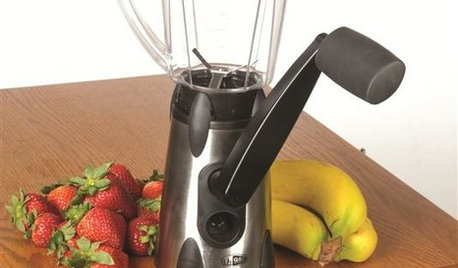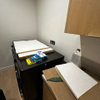Need to Manually start a spin cycle
andre_media
10 years ago
Related Stories

CEILINGSCeiling Fans: Some Spinning Sensations
How to Match Your Fan With Your Space and Keep Cool in Style
Full Story
ACCESSORIESEasy Green: Cut Electricity Use With 15 Unplugged Home Devices
Crank up the energy savings, courtesy of household items that come into power the old-fashioned way: manually
Full Story
HOMES AROUND THE WORLDMy Houzz: In Rome, a Treasure Chest of Found Objects
An artisan’s work-home space is a place of reinvention, where vintage and modern finds are given a creative spin
Full Story
LAUNDRY ROOMSLaundry Makes a Clean Break With Its Own Room
Laundry rooms are often a luxury nowadays, but a washer-dryer nook in a kitchen, office or hallway will help you sort things out
Full Story
MORE ROOMSHome Tech: Getting Rid of Wires Without Sacrificing Sound
Wireless home technology still isn't perfect, but new products are giving audiophiles choices
Full Story
WINDOW TREATMENTSCurtain Speech
Learn the basic terms for parts and styles of draperies and curtains to get the look you want
Full Story
GARDENING GUIDESGreat Golden Digger Wasp: A Beneficial Flower-Visiting Insect
Introducing the great golden digger wasp, a colorful pollinator that also hunts foliage-eating insects
Full Story
HOUSEKEEPINGYour Guide to a Spotless, Beautifully Organized Home
Use our 7-day plans to bring order and cleanliness to each room of your house
Full Story
HEALTHY HOMEGet Cleaner Indoor Air Without Opening a Window
Mechanical ventilation can actually be better for your home than the natural kind. Find out the whys and hows here
Full Story
ORGANIZINGYour Total Home Organizing and Decluttering Guide
Take it slow or be a speed demon — this room-by-room approach to organizing and storage will get your home in shape no matter how you roll
Full Story







dadoes
andre_mediaOriginal Author
Related Professionals
Pike Creek Valley Kitchen & Bathroom Designers · Vineyard Kitchen & Bathroom Designers · Avondale Kitchen & Bathroom Remodelers · Chester Kitchen & Bathroom Remodelers · Elk Grove Kitchen & Bathroom Remodelers · Fairland Kitchen & Bathroom Remodelers · Kendale Lakes Kitchen & Bathroom Remodelers · Skokie Kitchen & Bathroom Remodelers · South Lake Tahoe Kitchen & Bathroom Remodelers · Fort Collins Custom Closet Designers · South Elgin Custom Closet Designers · Glen Burnie Flooring Contractors · Land O' Lakes Flooring Contractors · Parma Heights Flooring Contractors · Raleigh Flooring Contractorsdadoes
andre_mediaOriginal Author
dadoes